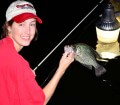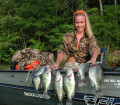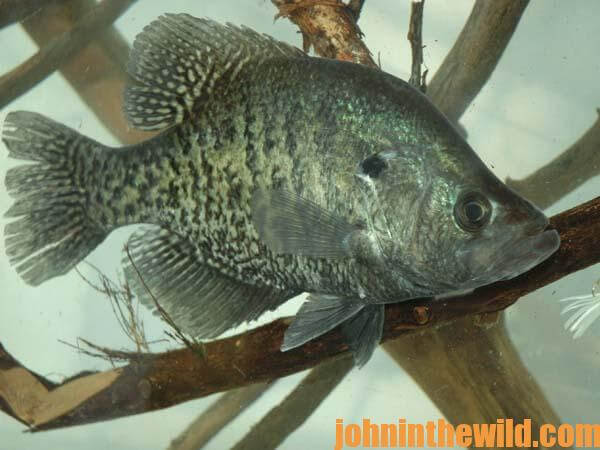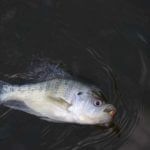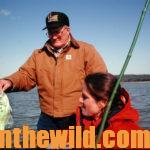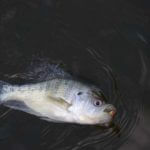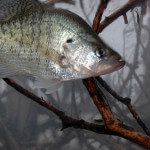John’s Note: Ken Cook quit his job as a fisheries biologist in 1983 to become a professional bass angler. The Oklahoma resident participated in a multitude of tournaments, including BASS and FLW events, for many years, staying on the water fishing for bass about 200 days a year. After retirement from his long career as a professional bass angler, he now has devoted his life efforts to making Tarbone Ranch in southwest Oklahoma a destination for others who share his passion for all things wild, offering a limited number of hunting and photographic safari opportunities for trophy game animals – deer, elk and bison. Cook still remains a consummate student of fish and their behavior.
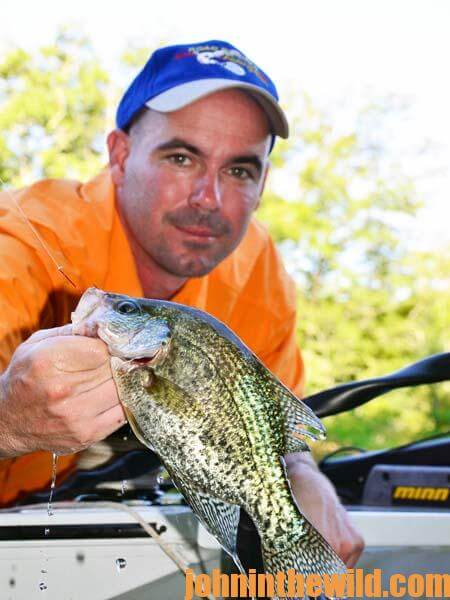 As Ken Cook explains, “The drop-offs along major creek and river channels often are the best places to locate crappie during the summer months. I pinpoint crappie in the summer in the same way I do bass, which involves three steps. During the summer, and especially the hottest summer months, anglers know crappie are hunting a water temperature that is comfortable to them that has plenty of dissolved oxygen. So, the first step is to determine where the pH breakline and the thermocline are. The breakline – a line of abrupt change in the depth, the bottom type or the water clarity in an otherwise uniform structure, perhaps the edge of a creek, a submerged cliff or even a stand of submerged weeds – will show us where the ideal pH is. pH is a measurement for liquids to determine whether they are acidic or alkaline. On a scale of 1 to 10, 7 is considered neutral. Below 7 the liquid is acidic, and above 7 it is alkaline. The thermocline – the layer of water where the temperature changes at least 1/2-degree per foot of depth, basically, a layer of water where rising warm and sinking cold water meet – will denote where the ideal water temperature is. Usually the pH breakline will sit right on top of the thermocline. To find these breaklines, I use a pH meter that measures the acidity and the alkalinity of the water and find the best depth. Another method of finding this breakline that not only crappie and bass but just about all the fish in the lake hold on is by running your boat across the lake and taking note of at what depth you spot fish showing up on your depth finder. By averaging the depths where you see the most fish, you reasonably can assume that this is the thermocline and the pH breakline.
As Ken Cook explains, “The drop-offs along major creek and river channels often are the best places to locate crappie during the summer months. I pinpoint crappie in the summer in the same way I do bass, which involves three steps. During the summer, and especially the hottest summer months, anglers know crappie are hunting a water temperature that is comfortable to them that has plenty of dissolved oxygen. So, the first step is to determine where the pH breakline and the thermocline are. The breakline – a line of abrupt change in the depth, the bottom type or the water clarity in an otherwise uniform structure, perhaps the edge of a creek, a submerged cliff or even a stand of submerged weeds – will show us where the ideal pH is. pH is a measurement for liquids to determine whether they are acidic or alkaline. On a scale of 1 to 10, 7 is considered neutral. Below 7 the liquid is acidic, and above 7 it is alkaline. The thermocline – the layer of water where the temperature changes at least 1/2-degree per foot of depth, basically, a layer of water where rising warm and sinking cold water meet – will denote where the ideal water temperature is. Usually the pH breakline will sit right on top of the thermocline. To find these breaklines, I use a pH meter that measures the acidity and the alkalinity of the water and find the best depth. Another method of finding this breakline that not only crappie and bass but just about all the fish in the lake hold on is by running your boat across the lake and taking note of at what depth you spot fish showing up on your depth finder. By averaging the depths where you see the most fish, you reasonably can assume that this is the thermocline and the pH breakline.
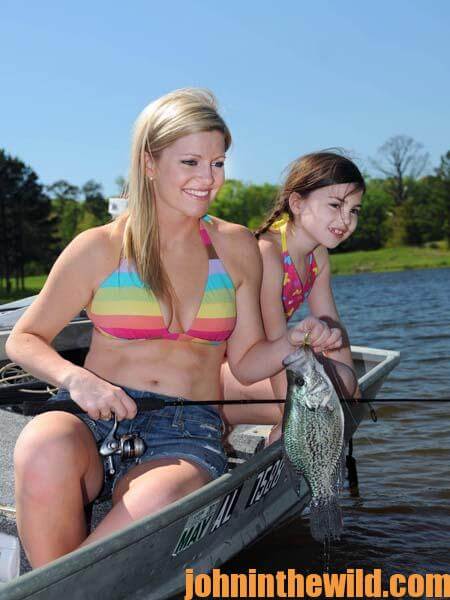 “The second step to finding crappie in the hot summer months is to locate a bottom break that creates an edge that the crappie will travel along that intersects the water depth where the proper pH and thermocline are. With these two factors, we then know the water depth the crappie will be the most comfortable in and have found the ledge where they want to feed. The only thing lacking is the third ingredient – cover, which I define as some kind of brush, stumps, logs or anything that the crappie can lay next to, get inside of or get under.
“The second step to finding crappie in the hot summer months is to locate a bottom break that creates an edge that the crappie will travel along that intersects the water depth where the proper pH and thermocline are. With these two factors, we then know the water depth the crappie will be the most comfortable in and have found the ledge where they want to feed. The only thing lacking is the third ingredient – cover, which I define as some kind of brush, stumps, logs or anything that the crappie can lay next to, get inside of or get under.
“I use these three ingredients like a road map. I locate the water temperature and the thermocline the crappie prefer first. Then I follow that water temperature line until I intersect structure. I then follow that structure until I locate cover. This simple, basic formula will locate crappie on any lake during either the summer or the winter months and is basically the same way bass anglers find bass in the summertime.
“One of the biggest differences in finding and catching crappie and locating and taking bass during the summer months is that the crappie fisherman uses smaller baits and lighter tackle. And an advantage to finding crappie in the summer months is that they tend to school-up tighter than bass do. So when you catch one crappie, you usually can assume there are more crappie in the area. Generally I fish around the spot where I’ve taken that first fish and anticipate catching a lot more crappie.”
To learn much more about crappie fishing, get John E. Phillips’ Kindle eBooks and some print books, “Crappie: How to Catch Them Fall & Winter,” “Crappie: How to Catch Them Spring and Summer,” “Catch Crappie All Year” and “Catch Cold Water Crappie Now.” Click here to get these books. You also can download for free John and Denise Phillips’ “The Crappie Catcher’s Cookbook” here.

